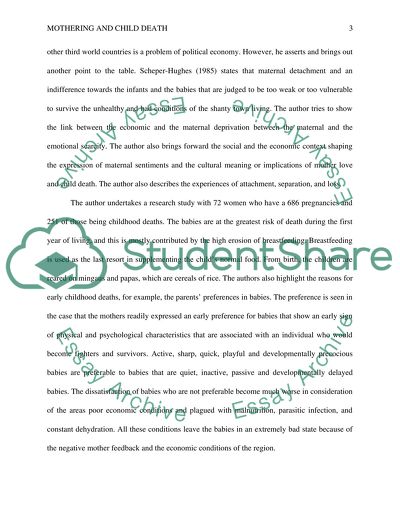Cite this document
(“Mothering and Child Death Essay Example | Topics and Well Written Essays - 2500 words”, n.d.)
Retrieved from https://studentshare.org/anthropology/1688171-mothering-and-child-death
Retrieved from https://studentshare.org/anthropology/1688171-mothering-and-child-death
(Mothering and Child Death Essay Example | Topics and Well Written Essays - 2500 Words)
https://studentshare.org/anthropology/1688171-mothering-and-child-death.
https://studentshare.org/anthropology/1688171-mothering-and-child-death.
“Mothering and Child Death Essay Example | Topics and Well Written Essays - 2500 Words”, n.d. https://studentshare.org/anthropology/1688171-mothering-and-child-death.


